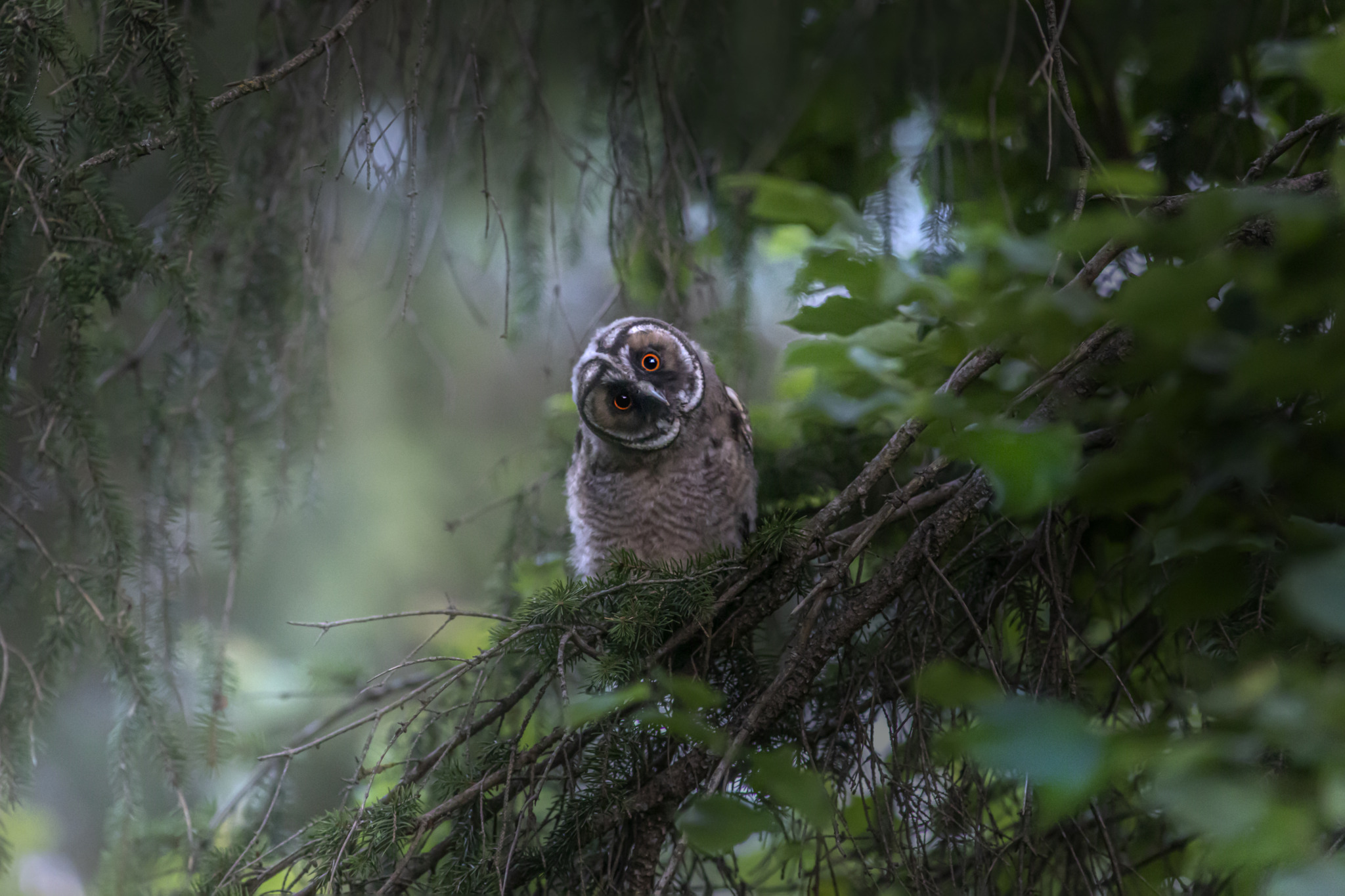The Long-eared Owl (Asio otus) is a captivating bird of prey known for its distinctive appearance, nocturnal habits, and silent flight. Found across Europe, Asia, and North America, this enigmatic owl inhabits a variety of woodland and forested habitats, where it hunts under the cover of darkness.
One of the most striking features of the Long-eared Owl is its prominent ear tufts, which are actually feather extensions atop its head, rather than true ears. These tufts are used for communication and camouflage rather than hearing, giving the owl its characteristic “long-eared” appearance.
Despite its name, the Long-eared Owl’s ear tufts are not always visible, as the owl can flatten them against its head to blend into its surroundings. Its plumage is typically mottled and streaked in shades of brown, buff, and gray, providing effective camouflage against tree bark and foliage.
The Long-eared Owl is a skilled and stealthy hunter, preying primarily on small mammals such as voles, mice, and shrews. With its keen eyesight and acute hearing, it can locate prey in low-light conditions and swoop down silently to capture its quarry with precision.
During the breeding season, Long-eared Owls are relatively solitary, nesting in dense coniferous or deciduous trees and laying their eggs in a shallow depression lined with feathers and other soft materials. Mated pairs may engage in courtship displays, including mutual preening and vocalizations, to strengthen their bond.
While generally shy and elusive, Long-eared Owls can sometimes be observed roosting in groups during the daytime, often in dense foliage or among the branches of trees. Despite their nocturnal lifestyle, they may also be encountered at dusk or dawn, flying silently through the forest in search of prey.
The Long-eared Owl faces threats from habitat loss, disturbance, and collisions with vehicles and structures. Conservation efforts aimed at protecting its woodland habitats and raising awareness about the importance of these birds as predators and indicators of ecosystem health are essential for ensuring their continued survival.
With its cryptic plumage, silent flight, and enigmatic nature, the Long-eared Owl continues to captivate birdwatchers and nature enthusiasts with its timeless charm and allure, reminding us of the beauty and wonder of the natural world.
Views: 1362
Subscribe to the newsletter:
